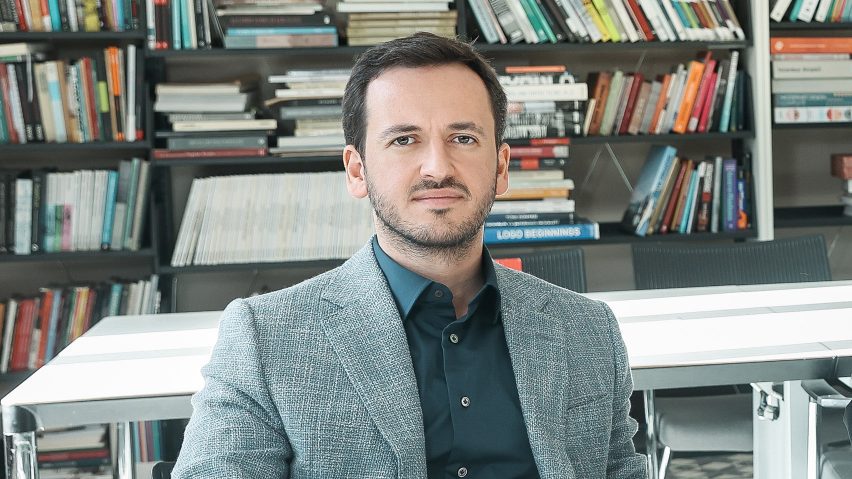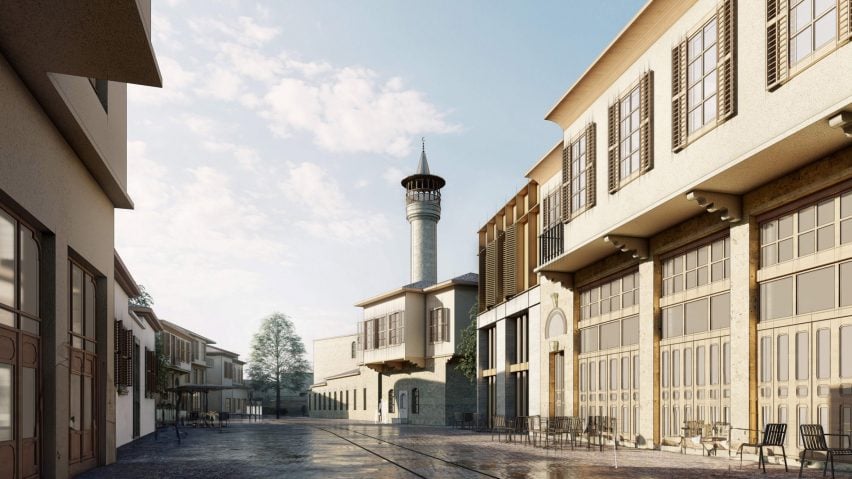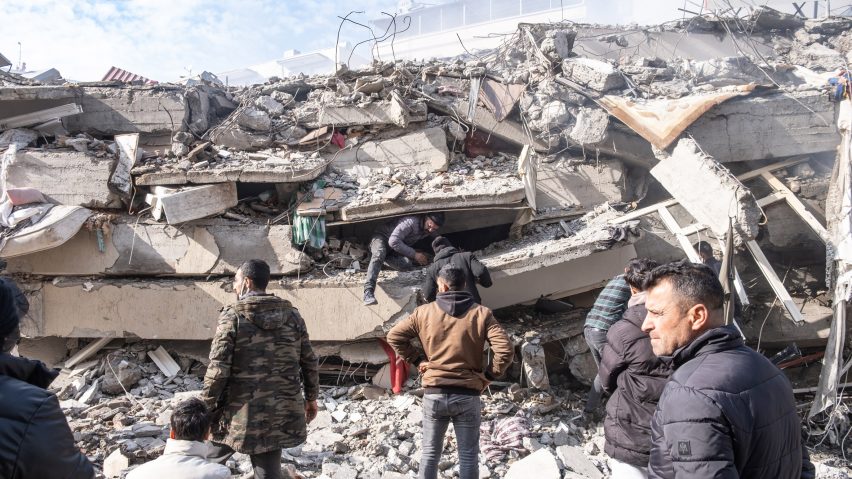
Turkey-Syria earthquake rebuild "most sophisticated urban problem in the world" says Mehmet Kalyoncu
Increasingly prevalent disasters mean collaboration and humility in architecture are more important than ever says Mehmet Kalyoncu, the architect coordinating efforts to rebuild following the Turkey-Syria earthquake.
"Our problems in the world are more complex than ever and we are in a time where we need teamwork," Kalyoncu told Dezeen.
"The era of starchitects is finished because the problems are much harder than one single person should carry," he said. "The new approach is going to be people working together."
Kalyoncu is a Turkish architect who serves as chair of the Turkey Design Council, a non-governmental organisation founded in 2015.
It is currently spearheading the rebuilding of the earthquake-ravaged Hatay province in southern Turkey.
The province was among those affected by the Turkey-Syria earthquake in February this year – a disaster that claimed at least 56,000 lives.
Turkey Design Council gathering "best brains in the world"
The Turkey Design Council has recently put together a consortium of 13 local and international companies spanning various disciplines to help rebuild Hatay.
Described by Kalyoncu as the "best brains in the world", the group consists of firms working across sectors including design, engineering, sustainability and heritage.
Among them are Danish architecture studio BIG, British engineering firm Buro Happold and British architecture studio Foster + Partners, which is leading the masterplan.

"After the devastating earthquake, unfortunately, placemaking and developing cities became the number one priority of Turkey," he said.
"As a non-governmental organisation, we felt great enthusiasm to involve ourselves and make this process as participatory as possible at local, national and international levels to create something really meaningful," he continued.
Kalyoncu said that international and cross-disciplinary collaboration, such as in this project, are vital for Turkey's recovery efforts due to the scale and complexity of the disaster.
"This is the most sophisticated urban problem in the world in this century," he said. "That's why we need the best brains. That's why we invited Foster and Partners, Buro Happold and Bjarke Ingels."
However, he believes that NGOs are the "driving force" when it comes to designing for disasters and suggested that architects have little power without them.
"An architect cannot make a social impact without involving other experts," Kalyoncu explained.
"The participation of non-governmental organisations is important," he continued. "I cannot say one single architect or one single architectural office can change something."
"We should listen more than we talk"
Increasing collaboration in architecture will require architects and designers to learn to practice with humility, he added, something he believes they will find to be a "challenge".
"Humility is, I think, very important," Kalyoncu explained.
"Working with designers is very hard," he continued. "Our approach is that the less area we occupy on the table, the more other people will come. We should listen more than we talk."
Turkey Design Council's project stemmed from discussions with Turkey's Ministry of Urbanisation and Ministry of Culture, which asked the organisation to help protect Hatay from future disasters and honour its history respectively.
The project is expected to take between five and 10 years to complete.

The rebuild will focus largely on the reconstruction of important sites such as places of worship and bathhouses, as well as an urban masterplan for the city of Antakya – the heart of the province.
With 80 per cent of Antakya destroyed during the earthquake, the team is relying on an archive of material documenting the city to guide the reconstruction.
"We don't want to make the new design, the new atmosphere, the new feeling very different from the old," said Kalyoncu.
"So we created an archive showing the cultural essence of Antakya," he explained. "There are many images, many stories and many videos taken with the people living there describing their city, how was it, how they felt, which areas they feel are important and make Antakya different than any other place in the world," he said.
"We don't want to design something that can be anywhere in the world."
Project aims to be a model for disaster recovery
In the wake of February's earthquake, it was widely reported that the scale of the disaster in Turkey was exacerbated by poor quality construction in the country resulting from a disregard for legislation.
At the time, the government issued more than 100 arrest warrants linked to buildings that were destroyed while Turkish architects called for urgent improvements to architectural education and practice.
To prevent history from repeating itself, Kalyoncu hopes that the project will set a precedent for high-quality earthquake-proof construction in the country outside of Hatay province.
"Hatay will be built back starting from the centre," he explained. "So if the centre will have good design, good planning, and really [align] with regulations, then the rest we hope will follow that."
While informing the post-earthquake rebuilding in Turkey, Kalyoncu hopes the project will also set an example for disaster recovery worldwide.
"There has never been an era that we lost so many cities in such a short time, we lost Beirut, we lost Aleppo and we are losing Gaza now. We lost them because of disasters," he added.
"That's why city planners, architects and people in the built environment, this field, it's our responsibility to build back."
In particular, he hopes the project and the consortium behind it will also highlight the value of international collaboration.
"Politicians, if you ask me, cannot do this without the support of international cooperative organisations," he said.
"So as Turkey Design Council, as a non-governmental organisation that has lived through a recent and the most challenging experience, we want to continue in other geographies of the world."
For now, many people displaced by the earthquake in Turkey remain living in temporary housing.
Among the organisations to help deliver this accommodation was Voluntary Architects' Network, the non-governmental organisation founded by Japanese architect Shigeru Ban in 1995.
The team used Ban's Paper Partition System, which makes use of cardboard tubes and fabric, to divide evacuation centres into private living spaces for survivors.
The images are courtesy of the Turkey Design Council unless otherwise stated.

Designing for Disaster
This article is part of Dezeen's Designing for Disaster series, which explores the ways that design can help prevent, mitigate and recover from natural hazards as climate change makes extreme weather events increasingly common.